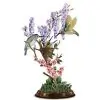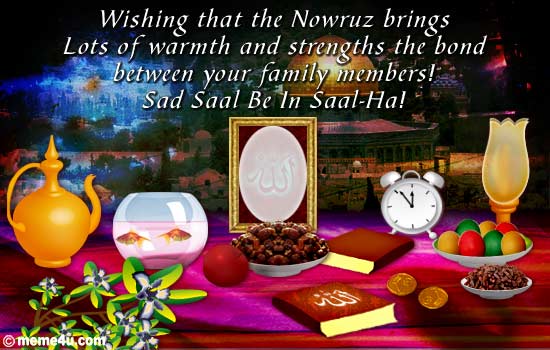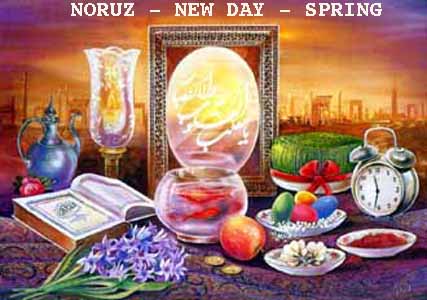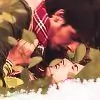Dorood (hello in persian) happy nowrooz (parsi new year) to all of you in advanc.
Since I would spend my Norouz holidays in india, I could not celebrate the first norooz day with you. Therefore, I decided to celebrate it today:
I want to tell u about our beautiful nowrooz
Haft Sin or the seven 'S's is a major traditional table setting of Nowruz, the traditional Iranian spring celebration.Today The haft sin table includes seven specific items starting with the letter 'S' or Sin in the Persian alphabet. The items symbolically correspond to seven creations and holy immortals called Amesha Sepanta protecting them. The seven elements of Life, namely Fire, Earth, Water, Air, Plants, Animals, and Human, are represented. They also have Astrological correlations to five planets Mercury, Venus, Mars, Jupiter, Saturn, and Sun and Moon. With the advent of Islam the word Amesha Sepanta shortened to and eventually was remembered by just the letter S and the number 7. The Haft Sin has evolved over time, but has kept its symbolism. Traditionally, families attempt to set as beautiful a Haft Sin table as they can, as it is not only of traditional and spiritual value, but also noticed by visitors during Nowruzi visitations and is a reflection of their good taste.
The Haft Sin items are:
- sabzeh - wheat, barley or lentil sprouts growing in a dish - symbolizing rebirth samanu - a sweet pudding made from wheat germ - symbolizing affluence senjed - the dried fruit of the oleaster tree - symbolizing love sir - garlic - symbolizing medicine sib - apples - symbolizing beauty and health somaq - sumac berries - symbolizing (the color of) sunrise
- serkeh - vinegar - symbolizing age and patience.
Other items on the table may include:
- Sonbol - Hyacinth (plant) Sekkeh - Coins - representative of wealth traditional Iranian pastries such as baghlava, toot, naan-nokhodchi Aajeel - dried nuts, berries and raisins lit candles (enlightenment and happiness) a mirror (symbolizing cleanness and honesty) decorated eggs, sometimes one for each member of the family (fertility) a bowl of water with goldfish (life within life, and the sign of Pisces which the sun is leaving). As an essential object of the Nowruz table, this goldfish is also "very ancient and meaningful" and with Zoroastrian connection. rosewater, believed to have magical cleansing powers the national colours, for a patriotic touch
- a holy book (e.g., the Avesta, Qur'an, Bible, Torah, or Kitb-i-Aqdas) and/or a poetry book (almost always either the Shahnameh or the Divan of Hafez)
New Year dishes
- Sabzi Polo Mahi: The New Year's Day traditional meal is called Sabzi Polo Mahi, which is rice with green herbs served with fish. The traditional seasoning for Sabzi Polo are parsley, coriander, chives, dill and fenugreek.
- Reshteh Polo: rice cooked with noodles which is said to symbolically help one succeed in life.
- Dolme Barg : A traditional dish of Azari people(I m also Azari & we speak Turkish too,an area in Iran namely Azarbaijan ), cooked just before the new year. It includes some vegetables, meat and rice which have been cooked and embedded in grape leaves and cooked again. It is considered useful in reaching to wishes.
- Kookoo sabzi : Herbs and vegetable souffle, traditionally served for dinner at New Year. A light and fluffy omelet style made from parsley, dill, coriander, spinach, spring onion ends, and chives, mixed with eggs and walnut.
Some famuse sweet for nowruz: shirini nokhodchi one of my fav sweet.
And finally some nuts that we say Ajil.
Navroz celebration by Parsis
In the Fasli/Bastani variant of the Zoroastrian calendar, Navroz is always the day of the vernal equinox (nominally falling on March 21). In the Shahenshahi and Kadmi calendars, which do not account for leap years, the New Year's Day has drifted ahead by over 200 days. These latter two variants of the calendar, which are only followed by the Zoroastrians of India, celebrate the spring equinox as Jamshed-i Nouroz, with New Year's Day then being celebrated in July'August as Pateti "(day) of penitence" (from patet "confession," hence also repentance and penitence).





































